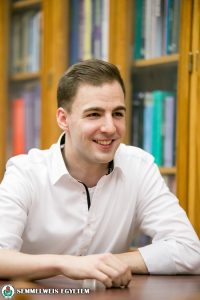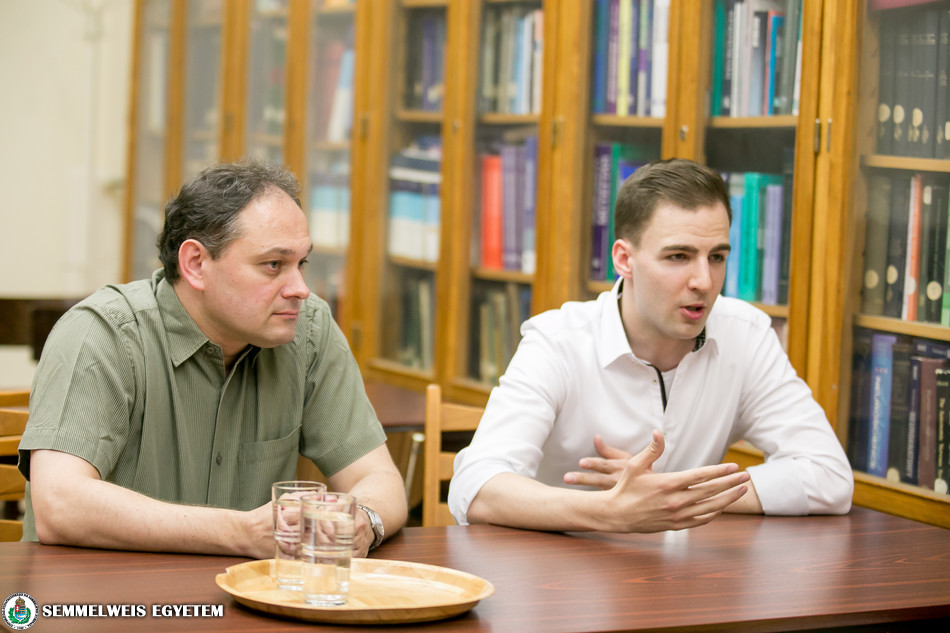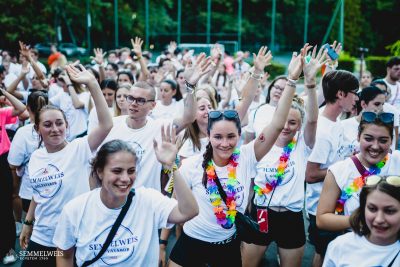Dávid Keller is mapping the neuronal activity caused by social interactions through animal experiments in the Neuromorphological Laboratory of the Department of Anatomy, Histology and Embryology. The freshly graduated youngster won the first prize in 2017 at the Students’ Scientific Association Conference for discovering a new thalamo-hypothalamic nervous pathway activating oxytocin neurons. He received the at the 2nd place at the 23rd Frigyes Korányi Science Forum, he gave a lecture at the 20th Congress of the Hungarian Anatomical Society, and in spring he could spend three weeks in a private hospital specialized in neurology in Buffalo. His supervisor is Dr. Árpád Dobolyi, the advisor of the Department of Anatomy, Histology and Embryology, Doctor of the Hungarian Academy of Sciences.
 After three years of work at the Students’ Scientific Association, Dávid Keller is preparing for the PhD. He joined the Students’ Scientific Association’s programme in 2015 and at first he was impelled by his thirst for knowledge and the challenge in the tasks not by getting the PhD degree. I wanted to prove, to put something significant onto the table. Although working in the clinical practice and curing people is a very significant activity, I wanted to increase science by taking part in the basic research – stated Dávid Keller.
After three years of work at the Students’ Scientific Association, Dávid Keller is preparing for the PhD. He joined the Students’ Scientific Association’s programme in 2015 and at first he was impelled by his thirst for knowledge and the challenge in the tasks not by getting the PhD degree. I wanted to prove, to put something significant onto the table. Although working in the clinical practice and curing people is a very significant activity, I wanted to increase science by taking part in the basic research – stated Dávid Keller.
He visited the Neuromorphological Laboratory of the Department of Anatomy, Histology and Embryology in a proactive way, and during the mentor-student work it quickly turned out that he is ambitious, staminal and precise – evoked the beginnings Dr. Árpád Dobolyi who has helped the path of several students every year since 2007. He also added that Dávid Keller’s topic filled into the research direction of the laboratory very well, which was expanded from the examining of the background of the nervous system of maternal behaviour to the examining of the adult-adult social interaction of the guinea pigs.
The main project of the research group is to describe which systems and paths of the brain innervate the oxytocin cells. It has been known that the sexual interaction and breastfeeding increases the level of oxytocin. However, it seems that in social relations this effect can also be generated by non-sexual touches.
In his Students’ Scientific Association work, Dávid Keller was examining what kind of nervous system leads to oxytocin neurons. Based on the plans, he will continue his work in the Doctoral School where he will examine the exact function of these paths.
The young researcher, in agreement with his mentor, would recommend working at the Students’ Scientific Association to all students, as the skills learned there can be beneficial not only in scientific advancement but also in everyday life. According to Dr. Árpád Dobolyi, it is flattering if young people are interested in his research topics, and he feels obliged to help the next generation. In a sense, research goes better if I involve them in my work and take advantage of their new approaches, as they help in promoting the research process with their presence, says the mentor.
Dávid Keller’s highest scientific achievement so far is the paper entitled “Mapping Neuronal Activation during Social Interactions in Rats”. It was published together with Dr. Melinda Cservenák in 2017 in the international journal “Endocrinology”, which has a 4,286 impact factor. He is also proud of the Iván Krisztinicz Award for the best English presenter at the HMAA (Hungarian Medical Association of America) Conference in Balatonfüred, which allowed him to participate at the association’s annual conference in Sarasota (Florida, USA) in October 2017 and present his Students’ Scientific Association topic. It was due to this participation that at the invitation of the Medical Director of Dent Neurologic Institute, he was able to spend three weeks at the private neurological hospital in March 2018. As he says, that period was a lifetime experience for him.
Zsófia Haszon
Photo: Attila Kovács– Semmelweis University
Translation: Diána Módos, Edina Szendreiné Nagy




